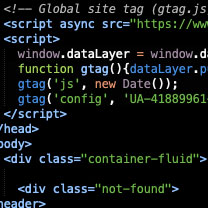BLOG

Common Reasons for App Store Rejection
You’ve spent a lot of time and possibly money building your iOS application and now you’re ready to release it to the world. First, you will need to get it approved by Apple to release it on the App Store. This can often seem intimidating, but most of the time the reasons that apps get rejected are fairly straight forward and easy to avoid. Below are some of the most common mistakes to look out for and revise before you submit your mobile app to the App Store:
Metadata Issues
If the description of your application is vague or inaccurate, Apple will ask you to correct or add to it. If you have any words misspelled, or incorrect capitalizations (e.g. “Iphone”, instead of the proper “iPhone”) you’ll need to make edits. When considering the screenshots you’ll submit, prepare them on the latest version of iOS or iPhone/iPad. Lastly, ensure the application privacy policy and support portals include working links.
The good news here is that metadata is easy to fix, and if it’s the only point of contention, you won’t need to upload a new binary. Just correct these minor issues and resubmit.
Crashes or Bugs
For custom mobile application developers, this should be an obvious one. Ideally you’ve already tested your app thoroughly for any bugs before submitting to the App Store. Apple will thoroughly test your app, and if they notice any crashes or unexpected behavior, they will reject it. So, spending some time on quality assurance before submitting will benefit you in the long run.
Info.plist Privacy Descriptions
All iOS apps must request user permission before accessing private frameworks such as contacts, photos, and location. A privacy description in your app’s Info.plist file will be necessary for each framework that your app requests permission. Recently, Apple has become stricter about rejecting generic descriptions. For instance, simply saying “[My App] uses the camera” will not suffice. You need to describe why your app is requesting permission. A better example would be “[My App] uses the camera to take a profile picture.”
Poor Performance or User Interface
Apple holds apps to a high standard. Apps are rejected if they demonstrate abnormally long loading times, or poor performance in other respects. Poor UI, or other design issues may also cause disqualification. Be sure to follow Apple’s User Interface Guidelines, and to test your app on devices of different sizes. It’s common for an app to look good on one iPhone, but for alignments and formatting to be out of place on a larger or smaller model.
Demo or Beta Versions
Make sure your content looks “final” before submitting to Apple. They review all the content in the application and flag words like “test” or “demo”, considering this to mean the application is unfinished and not ready for public use. They also look for any content that seems incomplete and could confuse users.
Incomplete Information in the Submission
Be detailed in the information you use to submit your application. If your app requires an account to sign in, be sure to include a username and password (even if your app has a free sign-up process, it will get rejected if you don’t include a username and password). Be certain the account provided has access to all of your app’s features. If your app connects to specific hardware, such as a bluetooth device, you will likely need to demonstrate it in a video--a screen capture won’t suffice. You’ll need to show a video of your phone and the device, and then show the app running on your phone and any interaction with the external hardware.
If you build a high-quality app and cover all your bases, passing Apple’s review process is generally not difficult. By minding these potential trip ups, you’ll be a few steps closer to getting your app out in front of the people who can’t wait to use it.
YOU MAY ALSO LIKE

June 5, 2019 - By Derek H.
3 Warning Signs An Agency Is Writing a Check Its Dev Team Can’t Cash


